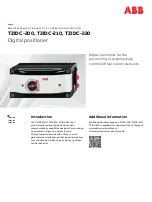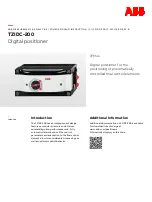
INCRA LS Positioner Owner’s Manual
13
Micro Adjusting your Fence
Position
The micro adjust feature of your LS Positioner allows for
precise positioning of the fence to any location between
the
1
/
32
” or 1mm incremental spacing of the lead screw.
You’ll find this feature extremely handy the next time
you need to widen a mortise by a hair for a great fitting
mortise and tenon joint. Use the micro adjuster for a
flawless fit when cutting grooves to accept inlay strips or
to loosen up a tight fitting tongue and groove joint. You’ll
find it especially useful for setup operations like “zeroing”
to your cutter, or “centering” for joinery. Here’s a step-by-
step look at operating your LS Positioner’s micro adjuster.
See Fig. 29 as you follow the steps.
Set Carriage Clamp to Micro Adjust
Position
Lower the carriage clamp to completely unclamp the
carriage, then raise the carriage clamp to the center
position. This center position for the carriage clamp
softens the clamping pressure on the carriage to per-
mit movement during micro adjusting.
Micro Adjust the Fence Position
Rotate the red micro adjust knob located at the
forward end of the carriage. Turn the knob clockwise
to move the fence toward the cutter, or counterclock-
wise to move the fence away from the cutter. Ball
bearing engaged detents on the knob provide an
audible click for each
1
/
1000
” (1/20mm for metric
version) of fence movement.
lock the Carriage Clamp
Pull the carriage clamp up to lock the carriage
in place. Gauging the distance moved when micro
adjusting is easy. A full turn of the knob equals
1
/
32
”
(1mm for metric version.) For smaller adjustments,
the black dial is marked in
1
/
1000
” (1/40mm) increments.
After micro adjusting, you can re-zero the dial to the
pointer by rotating the dial (not the red knob) with
your fingers. See Fig. 30.
Zeroing the Fence to Your Cutter
In order to ensure accurate cutting results from any
fence for general purpose routing, the fence must first
be “zeroed” to the cutter, Fig. 31. To zero your fence,
unlock the carriage clamp and slide the fence up to
the edge of the cutter. Sight down the length of the
fence to check for a gap between the fence and the
cutter. Fine-tune any remaining distance by micro
adjusting the fence position. When the gap of light
disappears, the cutter will be “zero” distance from
the fence. Check to make sure that the router bit is
safely centered in the opening in the fence. Return the
carriage clamp to the locked position, then slide the
measuring scale to read 0” under the hairline cursor.
1
2
3
For a truly precise “zeroed” setup, follow
the instructions above, then move the fence
to a scale reading of ¼” and make a test
cut on a piece of scrap stock. (Make sure the
scrap stock has a straight and square fence bearing
edge.) Use a pair of machinist calipers to measure
the distance between the groove and the edge of
the board. If it does not measure exactly .250”, just
use the micro adjuster to accurately fine-tune the
remaining distance.
FIg. 29
Micro adjusting
Fourth: Pull
carriage clamp
up to “locked”
position
Third: Turn
micro adjust
knob to fine-
tune fence
position
First: Push
carriage
clamp down
to “unlock”
Second: Pull carriage clamp up to
center “micro adjust” position
FIg. 30
Re-zeroing the micro adjust dial
After micro adjusting, rotate the
dial (not the knob) to align the
zero with the pointer
Micro adjust knob
Micro adjust dial
Pointer
FIg. 31
Zeroing the fence to your cutter
First: “Unlock”
carriage clamp and
slide fence up to
cutter
Second: Raise carriage
clamp to “micro adjust”
position and rotate
micro adjust knob until
gap between fence and
cutter disappears
Third: Lock carriage
clamp
Fourth: Slide
stainless steel
primary scale to
read 0” under the
hairline cursor
0
























